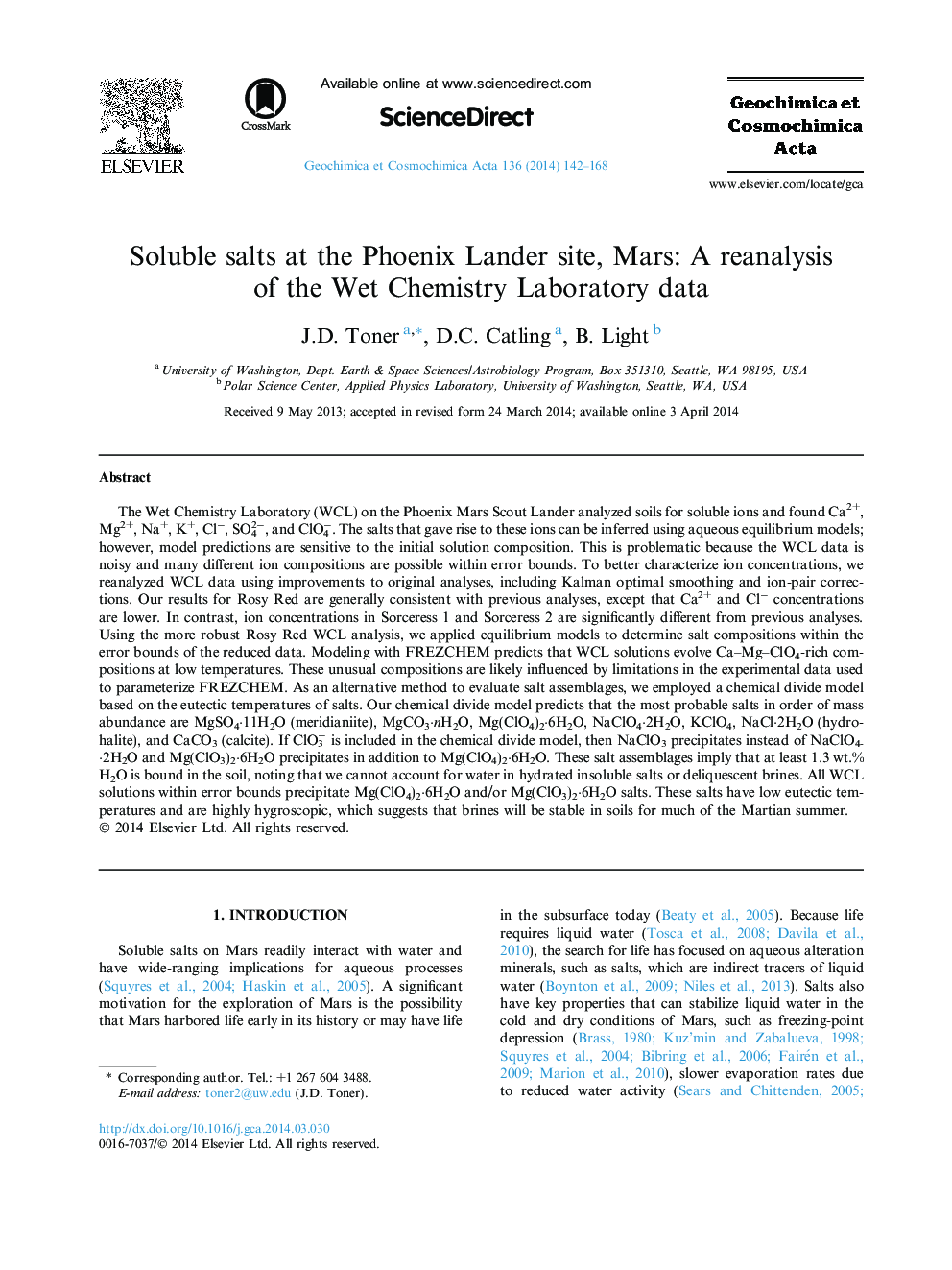| کد مقاله | کد نشریه | سال انتشار | مقاله انگلیسی | نسخه تمام متن |
|---|---|---|---|---|
| 6438604 | 1638021 | 2014 | 27 صفحه PDF | دانلود رایگان |
عنوان انگلیسی مقاله ISI
Soluble salts at the Phoenix Lander site, Mars: A reanalysis of the Wet Chemistry Laboratory data
ترجمه فارسی عنوان
نمک های محلول در سایت فونیکس لندر، مریخ: بازخوانی داده های آزمایشگاه شیمی مرطوب
دانلود مقاله + سفارش ترجمه
دانلود مقاله ISI انگلیسی
رایگان برای ایرانیان
موضوعات مرتبط
مهندسی و علوم پایه
علوم زمین و سیارات
ژئوشیمی و پترولوژی
چکیده انگلیسی
The Wet Chemistry Laboratory (WCL) on the Phoenix Mars Scout Lander analyzed soils for soluble ions and found Ca2+, Mg2+, Na+, K+, Clâ, SO42â, and ClO4â. The salts that gave rise to these ions can be inferred using aqueous equilibrium models; however, model predictions are sensitive to the initial solution composition. This is problematic because the WCL data is noisy and many different ion compositions are possible within error bounds. To better characterize ion concentrations, we reanalyzed WCL data using improvements to original analyses, including Kalman optimal smoothing and ion-pair corrections. Our results for Rosy Red are generally consistent with previous analyses, except that Ca2+ and Clâ concentrations are lower. In contrast, ion concentrations in Sorceress 1 and Sorceress 2 are significantly different from previous analyses. Using the more robust Rosy Red WCL analysis, we applied equilibrium models to determine salt compositions within the error bounds of the reduced data. Modeling with FREZCHEM predicts that WCL solutions evolve Ca-Mg-ClO4-rich compositions at low temperatures. These unusual compositions are likely influenced by limitations in the experimental data used to parameterize FREZCHEM. As an alternative method to evaluate salt assemblages, we employed a chemical divide model based on the eutectic temperatures of salts. Our chemical divide model predicts that the most probable salts in order of mass abundance are MgSO4·11H2O (meridianiite), MgCO3·nH2O, Mg(ClO4)2·6H2O, NaClO4·2H2O, KClO4, NaCl·2H2O (hydrohalite), and CaCO3 (calcite). If ClO3â is included in the chemical divide model, then NaClO3 precipitates instead of NaClO4·2H2O and Mg(ClO3)2·6H2O precipitates in addition to Mg(ClO4)2·6H2O. These salt assemblages imply that at least 1.3 wt.% H2O is bound in the soil, noting that we cannot account for water in hydrated insoluble salts or deliquescent brines. All WCL solutions within error bounds precipitate Mg(ClO4)2·6H2O and/or Mg(ClO3)2·6H2O salts. These salts have low eutectic temperatures and are highly hygroscopic, which suggests that brines will be stable in soils for much of the Martian summer.
ناشر
Database: Elsevier - ScienceDirect (ساینس دایرکت)
Journal: Geochimica et Cosmochimica Acta - Volume 136, 1 July 2014, Pages 142-168
Journal: Geochimica et Cosmochimica Acta - Volume 136, 1 July 2014, Pages 142-168
نویسندگان
J.D. Toner, D.C. Catling, B. Light,
